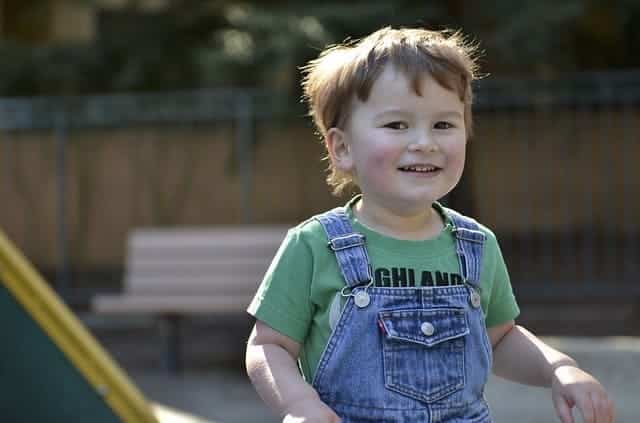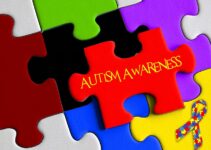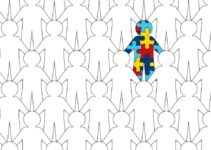As an educator and a behavior analyst, this is the question parents ask me the most.
The simple answer, as heartbreaking as it sounds, is there is no cure for autism. However, there are interventions that can help minimize the effects.
The Diagnostic and Statistical Manual of Mental Disorders (5th edition) (DSM-5) classifies autism as a neuro-developmental disorder with persisting deficits in social communication and social interactions across multiple contexts.[1]
What this means is that most autism interventions revolve around socialization and communication.
Table of Contents
Understanding Autism Interventions Using the “Culture” Analogy
The most frequent analogy I use when this question is posed is: “you’re traveling to a new country, but you don’t speak the language or understand the customs, so you try to just get by day-by-day. What tools do you need to get by? What things do you see around you? How do you navigate your environment?
Let’s take a look through this lens, so we can better understand the “culture of autism”:
- Language: The way children with autism hear, interpret, and express themselves
- Socializing: The skills they need to understand the world around them
- Behavior: The definition of “behaviors” and the interventions used to target them
Interventions to Improve Language Skills
Receptive language:
Imagine you’ve entered a new country where you don’t speak the language. You listen to the sounds that the native speakers make and attempt to imitate some of them, but they are foreign to you.
But you start to develop a vocabulary by watching how others attach words to objects and how they interpret and respond to verbal messages. This is considered receptive language.
Expressive language:
After listening to the speaker for a while and interpreting and responding to their message, you try to imitate the word the speaker used for a specific object. This attempt to verbally communicate your wants and needs is considered expressive language.
Developing individualized language-based programs:
When developing language programs individualized for each child’s needs, we do so by assessing where they are in the process of acquiring language. Some children are just beginning to make sounds, while others may use a few words, gestures or signs. Yet some may never use words at all but can navigate their environment.
The most common assessment used to develop language-based programs is the Verbal Behavior Milestones Assessment and Placement Program (VB-MAPP). This assessment and placement program was originally developed by Mark L. Sundberg, Ph.D., BCBA-D.
It breaks down the nuanced skills required for language acquisition during three different stages: 0-18 months, 18-30 months, and 30-48 months. This breakdown is based on how a “normally” developing child, or in the case of the example a native speaker, acquires these skills.[2]
Communication is important because it allows us to get our needs met:
When we are “foreigners,” the most important aspect of it is communication: “How can I get my needs met?” “How can I tell other people what I’m thinking or feeling?” “Can I understand what is being communicated to me?” What happens when my needs are not met through language?
Children who are unable to clearly articulate their needs and wants, may exhibit challenging behaviors like aggression, self-stimulatory behaviors, and self-injuries.
Ask yourself this: “As a “foreigner,” should you expect the natives to change their language to fit your communication preferences? It’s imperative that we help our children assimilate into the world around them.
If you had a difficult time communicating with others, would you expect them to be understanding and patient with you?
Thus, it is extremely important that we exercise patience with children who are at different places in their language journeys.
Once you have developed the basics of a foreign language, would you be able to go right up to a native speaker and have a full-on conversation? As a novice communicator, do you think you would understand everything being said to you? Also, do you think you would understand the speaker’s jokes or idioms?
Imitation Skills:
Some of the most important skills we should all have – ones we so often take for granted, are imitation skills.
You may not realize this, but most, if not all of us, have use imitation skills often in our daily lives. In fact, we used imitation skills to learn how to eat as infants, toddlers, and young children. For example, we observed our parents as they ate, held their utensils, put those utensils down after taking a bite, etc.
We also used imitation skills to learn how to play with other kids. More specifically, we imitated the behaviors we saw around us. That’s how we learned how to share, approach others, talk to others, and demonstrate various play skills.
So, as a “foreigner,” should you expect natives of the country to do things differently than you when greeting each other, making conversation, and using non-verbal gestures and cues? Do you expect them to change the words they use so you can better understand what they are saying?
Eye Contact:
Eye contact is another aspect of that “autistic culture” that is rarely discussed, although it should be. Many times parents are concerned if their children neglect to make eye contact or gaze in their eyes when being spoken to and communicating with them or others.
Research suggests that this occurs not because a child is uninterested in interpersonal relations, but because there is an overreaction when eye gaze is forced, triggering anxiety and avoidant behaviors. Therefore, researchers suggest that a habituation approach be adopted by parents and others, where you slowly having the child look you in the eyes. [3]
Think about eye gazing in other countries. For instance, engaging in eye contact while in Japan could be misconstrued as aggressive or rude. In addition, there may be social status “rules” about the amount of eye contact with others that is deemed “acceptable” by societal standards.
Still, if we are aware that there are times, when it is uncomfortable and anxiety-provoking for children with autism, we should seriously take this information into consideration, and set expectations that are appropriate for them.
Measuring and Improving Behavior
Let’s think of behavior as anything a person does that can be observed and measured. Oftentimes in ABA we talk about behaviors that pass a “Dead Man’s Test.”
This filter, developed by Ogden Lindsey in 1965, is something we often use in my field. It basically states that if a “dead man” can do it, we should not consider it a “behavior.”
For example, a behavior described as “staying quiet during ‘circle time’” should not be considered a “behavior,” because a “dead man can do that.”
The truth is, when we create goals we tend to think about what a child will do in terms of what we can see or measure. But when defining behaviors, there are certain things we must keep in mind. For instance, the way “behaviors” are measured.
Behaviors are measured in various ways, such as the frequency (how often it happens), duration (how long a behavior lasts), and latency (how long it takes for a behavior to begin once a direction is given).
Therefore, it is vital that you be an active participant at your child’s school meetings or during his or her clinical assessments, by defining his or her behaviors, his or her way of communicating, and his or her way of socializing with others.
You can do this by describing what you have heard and observed to people who can really make a difference in the lives of children with autism. These are the most effective ways to assist in building a solid, individualized plan for your child.
Don’t Try to “Cure” Your Child, Rather Move Towards Creating a Richer “Culture”
Many parents want to “cure” their child’s autism, but thinking about it, as a “culture” could actually help them accept challenges as a tool that helps their child navigate within this “foreign” land. Think about how high school students take different learning paths once they graduate.
Some go to college, some go to technical school, and some go directly into the workforce. But just because everyone takes a different learning path does not mean they are somehow “less than” someone else. The same thing applies to our unique autistic learners.
Because I have been an educator and behavior analyst for a long time, I have worked with many children, and I can promise you that each one has his or her own unique nuances in personality – nuances that I wouldn’t want to change for anything in the world.
So I approach each student and client with the understanding that my ultimate goal is to help him or her acclimate to this “foreign world.”
As a result, it’s important for me to observe these behaviors, so I can better understand these children’s worlds and the “culture of autism.”
Resources
- American Psychiatric Association. (2013) Autism diagnostic criteria. Diagnostic and Statistical Manual of Mental Disorders (5th ed.). Washington, DC
- Sundberg, M. L. (2008) VB-MAPP verbal behavior milestones assessment and placement program: A language and social skills assessment program for children with autism or other developmental disabilities. Concord, CA: AVB Press.
- Massachusetts General Hospital. (2017). Why do those with autism avoid eye contact? Imaging studies reveal overactivation of subcortical brain structures in response to direct gaze. ScienceDaily.











As an educator for 38 years, I really appreciated this article’s insight into the “culture of autism.”